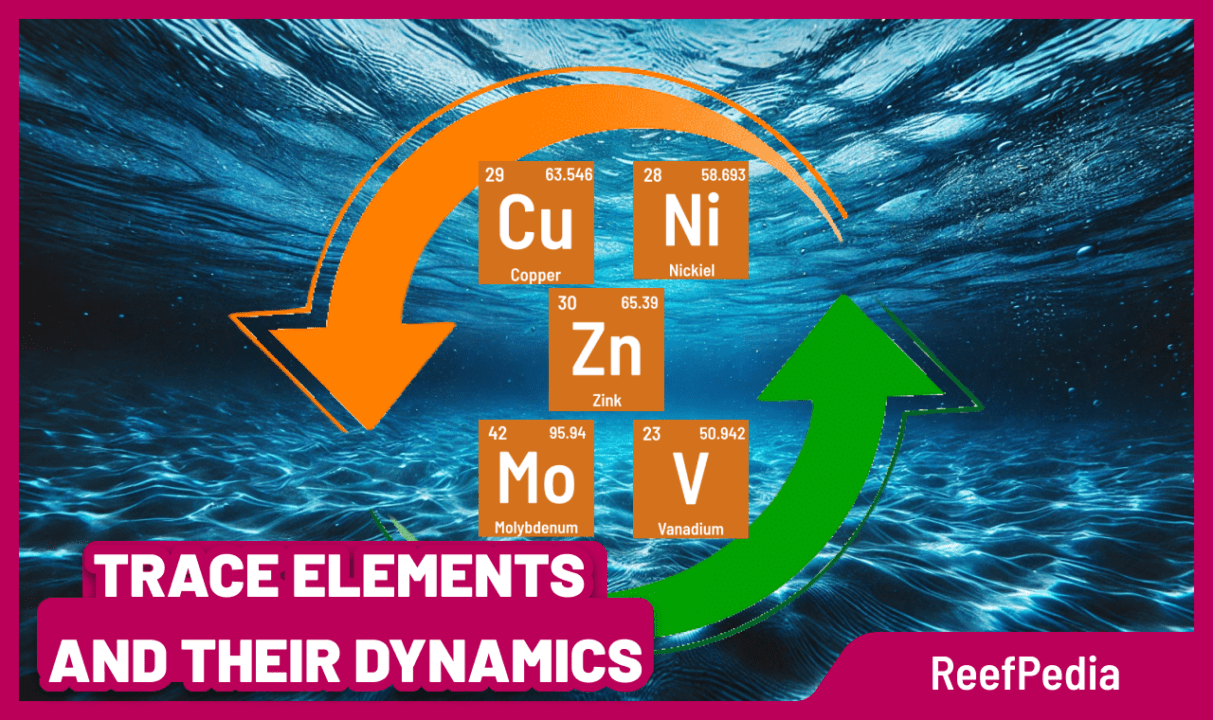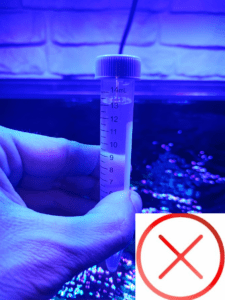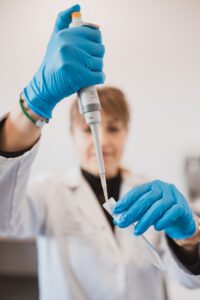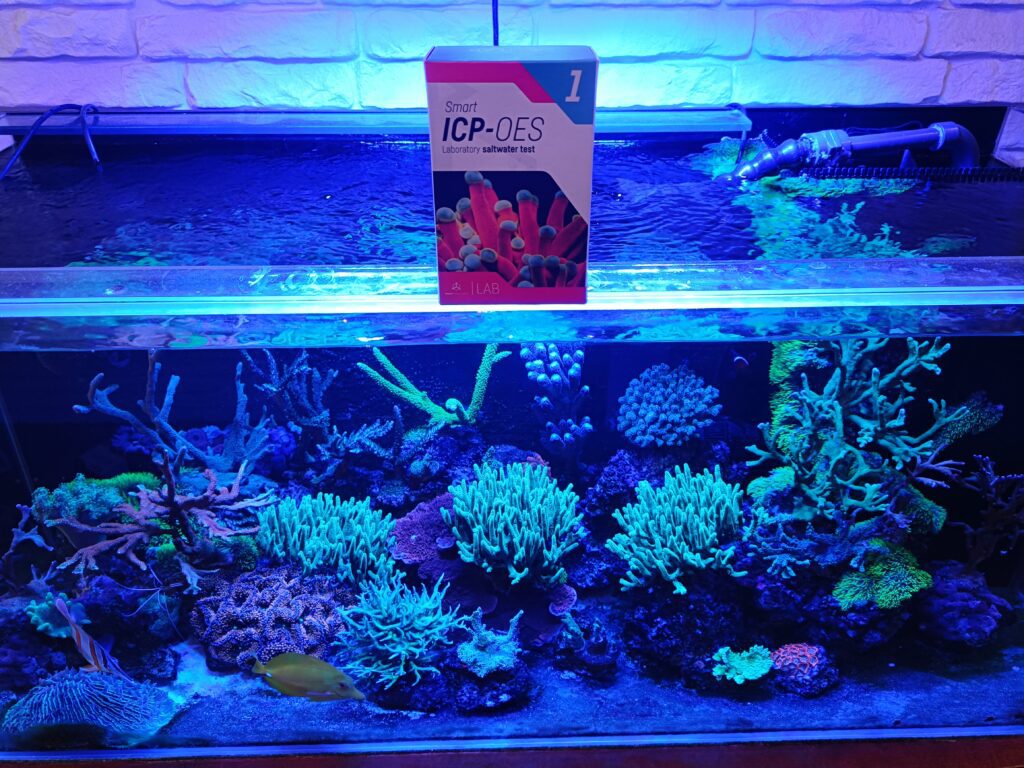Trace elements and their dynamics in a marine aquarium

Table of Contents
Introduction
Are you wondering how it’s possible that ICP-OES results indicate many excesses of trace elements and pollutants, yet your corals still polyp and look healthy? From a top-down perspective, there could be three reasons for such a situation:
- Improper water sampling for ICP-OES analysis;
- Error in the ICP-OES analysis;
- Gaps in knowledge about the interdependencies in water chemistry.
1. Improper water sampling for ICP-OES analysis
Proper sampling of seawater or RO/DI is crucial for accurate analysis. Incorrectly sampled water can later affect the discrepancies in results – the ICP report will then not reflect the actual state of your tank. Often, samples that reach the laboratory can cause an unnecessary “alarm” in a marine aquarist’s tank. To eliminate this cause, read the article on proper water sampling for ICP testing.
2. Error in ICP-OES analysis
A lab technician is also human and can make mistakes, which is important to keep in mind. Additionally, ICP is a machine that can become miscalibrated. In both cases, an aquarist might receive an incorrect result for their sample.

In our industry, such risk is small because the awareness of the consequences of a bad result for marine animals among technicians is high. Precision and accuracy are paramount. Our laboratory, Reef Factory LAB, is always ready to assist with any questions or doubts; we are available on WhatsApp, just scan the QR code and write to us:
3. Gaps in knowledge about the interdependencies in water
Chemistry Water chemistry is closely tied to chemical and biological dependencies. Understanding these is crucial for properly managing a reef tank. Knowledge about the interdependencies in water chemistry and biology is key, which is why in this article, you will learn more about dynamic elements that can cause quite a stir in a marine aquarium.
What are dynamic elements?
In marine aquarium keeping, elements referred to as “dynamic” are known for their active involvement in numerous biological and chemical processes occurring in the aquarium and their variability over time. In summary, dynamic elements are characterized primarily by:
- the variability of their levels in the water,
- continuous interaction with organisms,
- continuous interaction with other water components.
TOP 5 trace elements: Dynamic elements in your aquarium
Zinc, nickel, vanadium, copper, and molybdenum belong to the group of trace elements that are often interconnected. The main reason for this is the biological and biochemical processes in which they participate. Understanding their mutual relationships is important for assessing potential interactions between them. In the article, I will focus on these five dynamic elements:
It is important to remember that although these elements are interconnected and belong to the group of dynamic elements, each also plays unique roles in marine aquarium keeping.
Common characteristics of dynamic elements?
Chemically, dynamic elements such as zinc (Zn), nickel (Ni), vanadium (V), copper (Cu), and molybdenum (Mo) share several features that make them important in biological and biochemical processes. Here are the key similarities:
- Their chemical properties are similar enough that they compete for the same binding sites in proteins and enzymes.
- Most of them act as enzyme cofactors, meaning they are essential for catalyzing biochemical reactions. For example, molybdenum is a key cofactor in enzymes involved in the nitrogen cycle.
- They act antagonistically towards each other. For example, an appropriate level of zinc can antagonize the toxicity of copper, providing protection to marine organisms.
- They participate in redox reactions, which are electron transfer processes crucial in cellular metabolism.
Processes in which dynamic elements participate
ZINC (Zn) |
| |
NICKEL (Ni) |
| |
VANADIUM (V) |
| |
COPPER (Cu) |
| |
MOLYBDENUM (Mo) |
| |
Examples of dependencies between dynamic elements
Parameter | Impact on other elements | |
⬆️ ZINC (Zn) |
| |
⬆️ NICKEL (Ni) |
| |
⬆️ VANADIUM (V) |
| |
⬆️COPPER (Cu) |
| |
⬆️ MOLYBDENUM (Mo) |
| |
Summary
In summary, ICP-OES results may indicate the exceedance of norms for trace elements and pollutants, even though the corals in the aquarium appear healthy. The article discussed the role of dynamic elements such as zinc, nickel, vanadium, copper, and molybdenum, as well as their interactions with each other. Understanding these relationships is crucial for maintaining a healthy and balanced environment in a marine aquarium.
About author

Magdalena Metzler
Privately, I am a mother and a lover of nature and sport. My main interest is quantum chemistry, which hides a whole lot of unsolved mysteries and connections, which is extremely exciting from a scientific point of view.
In my scientific career, I have conducted international projects focused on innovative solutions for many branches of business, e.g. automotive, construction, and now, of course, marine aquaristics.
Working at Reef Factory gave me a passion for marine aquaristics, which I can develop every day, building a chemistry department and creating products that will help aquarists take care of tanks and ensure the highest safety of animals. One of the most exciting memories of working at Reef Factory is the commissioning of the ICP-OES spectrometer, which analyzes the elemental composition of seawater. The method of analysis in ICP is based on an analytical technique, which is a combination of my passion for quantum chemistry and marine aquaristics.
I hope you find my articles on ReefPedia interesting and helpful! Happy reading :))
